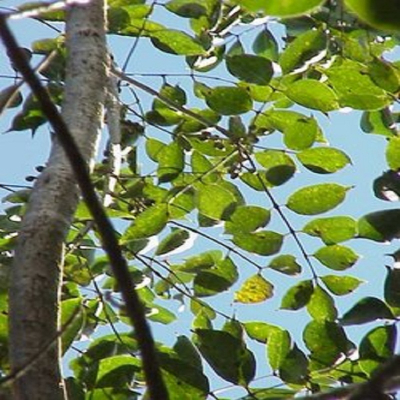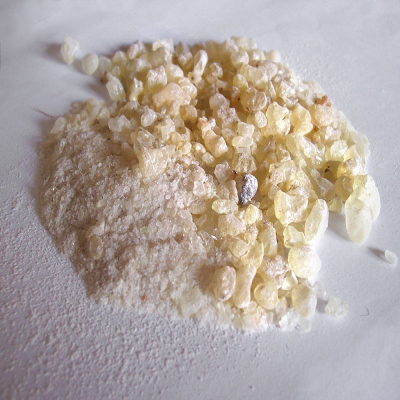Boswellia serrata Roxb. ex Colebr.
Synonyms : Boswellia glabra Roxb.
Family : Burseraceae
Parts Used : Bark , Gum
Vernacular Names :-
| English | : | Indian olibanum tree |
| Malayalam | : | Kuntirikkam, Parangisambrani, Samprani |
| Hindi | : | Salai |
| Sanskrit | : | Sallaki, kunduruskah |
| Assamese | : | Loban |
| Bengali | : | Kundur, Luban, SalaiGujarati: Dhupdo, Saledo |
| Gujarathi | : | Salai |
| Kannada | : | Guggula, Madi |
| Tamil | : | Parankisampirani |
| Telungu | : | Parangisambrani, Sambrani |
Distribution and habitat: In dry forests from Punjab to West Bengal and in peninsular India.
Botany: A medium to large sized, deciduous tree, up to 7 m in height with ash coloured papery bark peeling off in thin flakes. Young shoots pubescent.
- Leaves: Imparipinnnate, leaflets ovate or ovate- lanceolate, variable.
- Flowers: Small, white, in axillary racemes or panicles.
- Fruit: Drupes 12 mm long, trigonous, splitting along 3 valves, scarlet red when young, turns white at maturity.
- Seeds: Compressed, pendulous.
Chemical constituents: Serratol, 8 tetracyclic triterpene acids viz. β-boswellic acid, its 11-ketoderivatives and their acetates, 3 α- and 3 β-hydroxytirucall-8,24-dien-21-oic acid, 3α- acetoxytirucall-8,24-dien-21-oic acid and 3-ketotirucall-8,24-dien-21-oic acid are important
Uses: Anti inflammatory, Bark used in asthma, ulcers, haemorrhoids, skin diseases. Gum resin - fevers, piles, goiter, jaundice, arthritis, anti inflammatory



